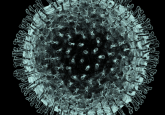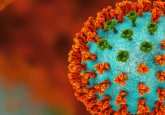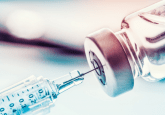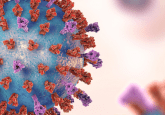From the journals: coronavirus
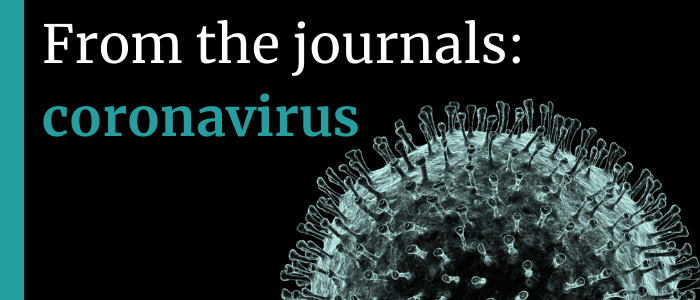
Many publishers have made their coronavirus-related publications free to read online, including ours, Future Science Group. Here’s a brief overview of what’s available.
2020 publications
Pandemic response management framework based on efficiency of COVID-19 control and treatment
This study evaluates the response management relative efficiency of 58 countries in two stages, using two models.
This article draws on the experience of the China NMPA in evaluating diagnostic reagents used to supplement the gold standard test method in the early stage of an epidemic.
Immunity to glycan α-Gal and possibilities for the control of COVID-19
COVID-19 vaccines: challenges and promises of trials, manufacturing and allocation of doses
This work validated two commercially available anti-SARS-CoV-2 ELISAs for IgG antibodies against spike S1 subunit and nucleocapsid proteins for use with DBS
This report provides suggested policy and procedures for free-standing acute inpatient rehabilitation hospitals to protect patients and healthcare personnel from SARS-CoV-2.
COVID-19: additive manufacturing response in the UK
This perspective gives an overview of the response of additive manufacturers to the COVID-19 pandemic in the UK – including the lessons learned, and the likely impact on the future post-pandemic.
Phylogenomics and phylodynamics of SARS-CoV-2 genomes retrieved from India
This phylogenetic network revealed dual ancestry and the possibility of community transmission of SARS-CoV-2 in India.
The use of chest ultrasonography in suspected cases of COVID-19 in the emergency department
This research suggests a simple lung ultrasound score-based model could be a useful tool for initial assessment in suspected cases of COVID-19.
Pivoting: from academic 3D printing to rapid COVID-19 solutions
This Editorial describes how a 3D printing lab repurposed itself to create patient care solutions for use during the COVID-19 pandemic.
This analysis concluded that despite their euphoric presentation in the press, none of the currently advertised 3D printed mask designs are suitable as reliable personal protective equipment.
Here, authors review studies based on antibodies, proteomics and metabolomics that have contributed to the development of diagnostics and therapeutics against COVID-19.
Evaluation of potential anti-COVID-19 therapies
USA stockpiling of remdesivir: How should the world respond?
This review describes how variability in (epi)genetic factors can conceivably explain variability in COVID-19 disease course. The authors specifically focus on variations in ACE2, TMPRSS2 and FURIN.
An integrative analysis identifying transcriptional features and key genes involved in COVID-19
This research sought to elucidate the transcriptional characteristics of COVID-19.
How has the COVID-19 pandemic impacted PCR?
Cave canem: urine is not urine in corona times
Here, authors review the evidence regarding use of the corticosteroid dexamethasone in virus-induced ARDS.
Phylogenetic and whole genome analysis of first seven SARS-CoV-2 isolates in Bangladesh
Whole-genome similarity for Bangladeshi SARS-CoV-2 was determined in a bid to provide data for the development of an effective vaccine.
The role of artificial intelligence in tackling COVID-19
Increased sensitivity using real-time dPCR for detection of SARS-CoV-2
Here, a real-time dPCR instrument and assay was developed to improve detection limits and linear dynamic range of the assay, creating a more versatile and robust system for quantitating and detecting target nucleic acid sequences for infectious disease or other applications.
The role of pharmaceutical nanotechnology in the time of COVID-19 pandemic
This review discusses the challenges that remain in the route to the clinic for nanosystems against COVID-19.
Therapeutic potential of inhalable medications to combat coronavirus disease-2019
Chloroquine/hydroxycloroquine and COVID-19: need to know more about
Clinical microbiology laboratories and COVID-19: the calm before the storm
Evidence-based point-of-care technology development during the COVID-19 pandemic
This review analyzes evidence-based point-of-care technologies in the context of the entire continuum of COVID-19, from early screening to treatment, and discusses their impact on improving patient outcomes.
Here, an integrated computational algorithm was used to explore the binding mechanism of TMC-310911/ritonavir (RVT) with SARS-CoV-2 and SARS-CoV main proteases.
In the tele-evaluation the authors recognized unique factors that could improve patient care, lessen burden and optimize access to community resources. Lessons learned from the experience are shared.
Cognitive testing in the COVID-19 era: can existing screeners be adapted for telephone use?
This study aimed to examine whether two existing cognitive screeners might be adapted for telephone administration by omission of item content requiring visual cues or assessment.
Coronavirus pandemic: treatment and future prevention
This review provides a timely update of vaccine and drug development, which, due to the intense activities, moves forward with unprecedented speed.
Gender parity among the Altmetric Top 100 publications on COVID-19
CRISPR vs COVID-19: how can gene editing help beat a virus?
Six ways to foster community-engaged research during times of societal crises
A new kit presented here was comparable to a similar detection kit for detection of SARS-CoV-2 in sensitivity, specificity and total coincidence rate.
Here, no worsening outcomes or active transmission to close contacts were found for the repositive COVID-19 patients.
This research determined that deregulated lncRNAs in SARS-CoV-2 infection are involved in viral proliferation, cellular survival, and immune response, ultimately determining disease outcome.
A comprehensive review about SARS-CoV-2
This review provides a comprehensive overview of our understanding of SARS-CoV-2 thus far, along with the pathology of COVID-19 and our attempts to treat/prevent it.
This research piece sought to determine if left ventricular global longitudinal strain (LVGLS) is affected by COVID-19 and if this has prognostic implications.
Here, mechanisms by which the antimicrobials lactoferrin, ovotransferrin and lysozyme may treat or prevent COVID-19 are reviewed.
In silico analysis of protein/peptide-based inhalers against SARS-CoV-2
Here, the authors demonstrate that mABs and AAT combined with dornase-alfa are active against the SARS-CoV-2 spike protein.
Withania somnifera as a potential future drug molecule for COVID-19
This Commentary discusses key literature that suggest W. somnifera could be a promising therapeutic candidate for COVID-19 treatment.
COVID-19 and the newly rediscovered multidisciplinarity
This Foreword introduces a special issue of Immunotherapy focusing on – you guessed it – COVID-19.
Potential alteration of COVID-19 by beta-mercaptoethanol
Results presented here show that BME could be useful against COVID-19.
Is blood transfusion safe during the COVID-19 pandemic?
This Editorial discusses the safety of blood transfusions during the pandemic.
Reevaluating chronic opioid monitoring during and after the COVID-19 pandemic
Here, authors discuss telemedicine and how providers might be able to mitigate the risk of opioid abuse in patients during the pandemic.
How ADA methodology informs SARS-CoV-2 assay development
This Editorial examines serology and anti-drug antibody testing as pertains to the COVID-19 pandemic.
Here, the authors analyzed the common structural features of viral 5’UTR regions that can be targeted by noncoding RNAs and identified miRNA binding sites suitable for designing RNA-based drugs to be employed successfully against SARS-CoV-2.
No small matter: a perspective on nanotechnology-enabled solutions to fight COVID-19
Thsi Perspective considers whether nanoparticles decorated with ACE2 could be exploited as decoys to intercept SARS-CoV-2 before it infects cells.
This article discusses evidence and recommendations regarding children and the return to school.
Digital regenerative medicine and surgery pedagogy for virtual learning in the time of COVID-19
This piece describes a virtual learning platform adopted in a regenerative medicine classroom for education during the pandemic.
Pathogenesis, clinical manifestations and complications of coronavirus disease 2019 (COVID-19)
This literature review concludes that the respiratory system and the lungs are the most commonly involved sites of COVID-19 infection. Cardiovascular, liver, kidneys, gastrointestinal and central nervous systems are involved with different frequencies and degrees of severity.
Genetic and pathogenic characterization of SARS-CoV-2: a review
This broad Review presents recent information on the genetics and pathogenesis of COVID-19 in addition to its clinical presentation and potential treatments.
Phages in the fight against COVID-19?
This Commentary delves into the possible use of phages in the current pandemic.
This article discusses appropriate laboratory operations to minimize exposure risks.
Here, a flow cytometry-based high-throughput screening system is proposed for testing of COVID-19 cases where the virus particle binds to specific primary antibodies and the resultant virus–antibody complex then binds to fluorescent-tagged secondary antibodies.
With SARS-CoV-2 detected in some cured COVID-19 patients, this research article demonstrates that patients exist for whom anal swabs – and only anal swabs – test positive for the virus in recovered patients. Thus, anal swabs are proposed as the optimal detection method prior to hospital discharge.
Here, the V485L variant of ACE2 is proposed as a natural resistance mutation among the Iranian population. In addition, variant S331F was shown to slightly increase susceptibility to infection.
Here, virtual screening revealed three drugs with promise for repurposing against COVID-19.
Cannabis for COVID-19: can cannabinoids quell the cytokine storm?
This Editorial examines whether cannabinoids could be helpful in handling the inflammatory storm seen in severe COVID-19
Thoughts on detecting tissue distribution of potential COVID-19 receptors
Here, researchers explored open datasets to elucidate the tissue distribution of cell receptors associated with COVID-19, such as ACE2, to determine organs that could be susceptible to infection.
COVID-19adversely affects the cardiovascular system. Transthoracic echocardiography has demonstrated diagnostic, prognostic and therapeutic utility. Here, the authors report biventricular myocardial strain in COVID-19.
Toll-like receptors and COVID-19: a two-faced story with an exciting ending
Here, authors speculate on whether targeting toll-like receptors using pre-existing drugs could help in the fight against COVID-19.
Could breath analysis by MS could be a solution to rapid, non-invasive testing for COVID-19?
This Commentary proposes mass-spectrometry breath analysis using mobile equipment as an alternative testing strategy for COVID-19.
In silico identification of conserved cis-acting RNA elements in the SARS-CoV-2 genome
This study sought to computationally predict conserved RNA sequences and structures known as cis-acting RNA elements (CREs) in the SARS-CoV-2 genome, in a bid to identify new vaccine or therapeutic targets.
Nanomedicine as a promising approach for diagnosis, treatment and prophylaxis against COVID-19
This review discusses the potential approaches utilizing nanotechnology for vaccination, diagnosis and therapy.
COVID-19: studying the global pandemic – foreword
This Special Issue of Future Virology is Guest Edited by Stefano Rusconi (University of Milan, Italy) and Frederick Hayden (University of Virginia, USA). It collates the latest in Research, Review and Commentary covering the COVID-19 pandemic.
Therapeutic and vaccine strategies against SARS-CoV-2: past, present and future
Focussing on lessons learned from SARS-CoV, this review proposes new opportunities for therapeutic development for COVID-19.
No protocol and no liability: a call for COVID crisis guidelines that protect vulnerable populations
This Report examines the disparity literature against resource allocation guidelines, and suggests that the guidelines may be supporting biased allocation of resources – including ableist, agist and racist biases.
The role of hematological parameters in COVID-19 patients in the emergency room
Here, the roles of biomarkers from a peripheral blood sample in the diagnosis of COVID-19 patients who visited an emergency room were evaluated.
This piece delves into repurposing of drugs against COVID-19, and proposes new chemistry-based strategies that might prove useful.
COVID-19: in the absence of vaccination – ‘mask-the-nation’
This Editorial discusses the importance of masks given the lack of a COVID-19 vaccine, and what is required for their use to be effective.
Here, 299 COVID-19 patients were assessed for biomarkers. Markers of inflammation and coagulopathy appeared to be useful for the identification of those at high risk for clinical deterioration.
This review summarizes peptide and peptide-based therapeutics that could target SARS-CoV-2, along with the potential advantages of peptidomimetics for use against COVID-19.
Presenting two cases of patients with COVID-19 and acute respiratory distress syndrome who were treated with tocilizumab, this report speculates that the immunotherapy could be an appropriate therapy for COVID-19.
N-acetylcysteine as a potential treatment for novel coronavirus disease 2019
This article hypothesizes that N-acetylcysteine (NAC) could decrease the activity of SARS-CoV-2, and dives into the reasons why.
Research progress on repositioning drugs and specific therapeutic drugs for SARS-CoV-2
This paper summarizes the current research progress and challenges in the development of anti-SARS-CoV-2 drugs, and proposes novel short-term and long-term drug research strategies.
This report discusses the clinical relevance of various COVID-19 tests and the current Centers for Disease Control and Prevention and American College of Radiology recommendations regarding the use of imaging in the diagnosis of COVID-19.
Sudden cardiac death in COVID-19 patients, a report of three cases
It has been noted that cardiovascular failure can also lead to death. This Case Series describes three cases and presents recommendations.
This Commentary looks to available evidence regarding the impacting of immune checkpoint inhibitors on the progress of COVID-19, and speculates about their potential use against the disease.
The potential role of nanomedicine on COVID-19 therapeutics
This Commentary discusses the potential of nanotech-based approaches for use against SARS-CoV-2 and COVID-19.
COVID-19 in homeless populations: unique challenges and opportunities
This Commentary addresses the needs and safety of vulnerable populations during the pandemic.
Bioanalytical research and training in academia during the COVID-19 pandemic
This article elaborates on the impact of the COVID-19 pandemic from the perspective of bioanalytical research and training in an academic laboratory.
Vesicular drug-delivery systems as theranostics in COVID-19
This Commentary examines the potential of theranostics in the development of novel COVID-19 treatments.
Empowering academic labs and scientists to test for COVID-19
This Expert Opinion examines how academic laboratories could be harnessed for testing in the US.
This article attempts three things: 1) to compare the demand for tests throughout the crisis; 2) to discuss the new tests hospital staff can offer; and 3) to present how staff can be reorganized on the basis of these changes.
Tackling SARS-CoV-2: proposed targets and repurposed drugs
This review focuses on the potential druggable targets and suitable therapeutics currently being explored in clinical trials.
This Benchmark describes the design of an economical smart inhaler that includes electrode-based sterilization to kill SARS-CoV-2 particles with a spark.
Case report: use of lenzilumab and tocilizumab for the treatment of coronavirus disease 2019
This article describes the case of a 68-year-old man with COVID-19 who progressed on hydroxychloroquine and lenzilumab, and then saw an improvement when switched to tocilizumab.
Focus on a 2019-novel coronavirus (SARS-CoV-2)
This Review summarizes epidemiological, genetic and clinic characteristics of the virus responsible for COVID-19, and provides an overview of recent research looking to better understand it.
This research article screened traditional antiviral plants for activity against SARS-CoV-2 Mpro and host TLRs, identifying rutin – a citrus flavonoid – as of potential interest.
Transmission and clinical characteristics of asymptomatic patients with SARS-CoV-2 infection
This review summarizes the epidemic status, transmission characteristics and clinical features of asymptomatic patients with SARS-CoV-2 infection.
COVID-19 and coronaviral hepatitis: evidence of collateral damage
This Commentary piece discusses the impacts of COVID-19 on the liver.
Virtual drug testing: redefining sample collection in a global pandemic
This Editorial discusses the impact of COVID-19 on anti-doping systems, and the potential of virtual drug testing.
Demographic and clinical comorbidities associated with the severity of infection suggest that possible variants known to influence the renin–angiotensin–aldosterone system pathway (particularly those that influence ACE2) may contribute to the heterogenous infection response. This article discusses the implications.
Targeting SARS-CoV-2 using polycomb inhibitors as antiviral agents
This article considers some of the new and possibly unconventional ideas that could prove useful in the fight against COVID-19.
Plasma albumin levels predict risk for nonsurvivors in critically ill patients with COVID-19
This study explored biomarkers for disease progression and outcome.
This study describes an optimized diagnostic policy for patients with respiratory tract infections, developed at an emergency department in The Netherlands.
A suspected case of COVID-19 turned into a confirmed case: a case report from Iran
This case report describes a suspected COVID-19 case that had a history of close contact with a COVID-19 patient. The diagnosis was confirmed after the SARS-CoV-2 nucleic acid was detected after four sputum sample tests.
Gold nanoparticles and semiconductor quantum dots in colorimetric and immunochromatographic assays, silica nanoparticles in the polymerase chain reaction and spike protein nanospheres as antigen carriers and adjuvants in vaccine formulations present notable examples in diagnostics and prevention. However, uses of nanoparticles in coronavirus infection treatments have been merely sporadic. This perspective article discusses.
This report describes a novel hypothetical approach combining available broad-spectrum antiviral agents such as nucleoside analogs with potential inhibitors of NendoU, for example nsp15 RNA substrate mimetics.
Discovery of alliin as a putative inhibitor of the main protease of SARS-CoV-2 by molecular docking
Here, the authors applied a molecular docking method to study the binding stability of remdesivir, ritonavir and chloroquine with SARS-CoV-2 Mpro.
This review provides rationale for the repurposing of a dual plasmid, currently in Phase III cancer trials, against SARS-CoV-2.
This article provides a snapshot of requirements for SARS-CoV-2 assays, and suggests ways their development and implementation could be accelerated effectively.
Virtual screening of immunomodulatory medicinal compounds as promising anti-SARS-COV-2 inhibitors
This study provides evidence that some medicinal compounds exert antiviral activity against the SARS-COV-2 virus and could be further exploited for the treatment of this disease.
Better preventing and mitigating the effects of Covid-19
This report recommends a number of strategies related to our exposome that could help ameliorate the effects of infection with SARS-CoV-2.
Comparison of the COVID-2019 (SARS-CoV-2) pathogenesis with SARS-CoV and MERS-CoV infections
This literature review examined the therapy options for SARS and MERS and discussed their potential against SARS-CoV-2.
This article discusses the potential utility of the BCG vaccine for COVID-19, and ongoing trials.
This review highlights the preventive measures, available clinical therapies and the potential of vaccine development against SARS-CoV-2, including the use of research previously done for SARS-CoV.
Prediction and analysis of key protein structures of 2019-nCoV
This study sought to predict and analyze the structure and function of SARS-CoV-2 proteins.
ARDS can occur with COVID-19. This review examines preclinical and clinical trials examining the utility of mesenchymal stem cells in combating the inflammatory reactions that cause it.
This piece examined Gamunex-C and Flebogamma DIF for activity against SARS-CoV-2 antigens.
Life after COVID-19: R WE going to help?
Could COVID-19 research end the debate around randomized clinical trials vs real world evidence (RWE)? This Commentary piece investigates RWE in COVID-19 and looks to the future.
Application of nanomaterials in treatment, anti-infection and detection of coronaviruses
This article reports on recent studies looking at harnessing nanoparticles for diagnostics or antivirals. It also looks to the use of nanomaterials as vaccines and nanosensors.
There is urgent need to understand the phylogeny, divergence and origin of SARS-CoV-2. With a recent study claiming that there was 17% divergence between SARS-CoV-2 and RaTG13 (a SARS-related coronaviruses) on synonymous sites by using sequence alignment, this study re-analyzed the sequences of the two coronaviruses with the same methodology. The authors demonstrate that the divergence between SARS-CoV-2 and RaTG13 has been overestimated.
COVID-19: How has the scientific community risen to the challenge?
As the novel coronavirus SARS-CoV-2 spreads around the world, scientists have raced to develop vaccines and tests in order to curb the infection. This article investigates their efforts thus far.
Pros and cons of the application of evolutionary theories to the evolution of SARS-CoV-2
This report discusses the validity of applying classic evolutionary theories and formula to the evolution of RNA viruses, raising several confounding factors that could jeopardize validity.
Extracorporeal membrane oxygenation therapy in the COVID-19 pandemic
This piece reviews the challenges in the use of extracorporeal membrane oxygenation (ECMO) as a mechanical support option for critical COVID-19 patients.
Exhaled breath condensate as a potential specimen for diagnosing COVID-19
This Commentary piece discusses whether exhaled breath condensates should be tested as a noninvasive sampling method in the clinic, and what technologies might be useful to help speed up sampling and screening during pandemics.
Managing bioanalytical studies during the COVID-19 pandemic: an overview
With the pandemic affecting most laboratories, this article discusses measures that might be taken to reduce the chance of COVID-19 spread, and its impact on laboratory analysts.
miRNA nanotherapeutics: potential and challenges in respiratory disorders
This Commentary addresses the challenges associated with the use of miRNAs as biomarkers and therapeutic targets for respiratory diseases, and the advantages of nonviral methods of delivery.
High-frequency longitudinal tracking of inflammation using dried blood microsamples provides a new window for personalized monitoring of infections, chronic inflammatory disease and clinical trials of anti-inflammatory drugs. This research article sheds new light on the dynamic regulation of acute phase responses, offering a new approach to visualization of multidimensional inflammation trajectories.
Drug repurposing strategies for COVID-19
Efforts to repurpose drugs are underway in a bid to tackle the COVID-19 pandemic. This Editorial discusses whether carefully combined cocktails could be more effective than individual use, and how to determine that combination.
COVID-19 and co-morbidities
This research analyzed risk factors for death in cancer patients with COVID-19.
Cardiology and COVID-19: do we have sufficient information?
This paper details the signs and symptoms of cardiovascular disease resulting from COVID-19, including its proposed pathophysiology, signs and symptoms, treatments and outcomes under investigation.
Cardiogenic shock following cardiac tamponade and Takotsubo in COVID-19
Here, the authors report a distinct presentation of cardiogenic shock in a young COVID-19 patient. The rapid onset of her suspected Takotsubo and the severity of her disease were striking features.
Acute type A aortic dissection in a patient with COVID-19
Here, authors report a type A aortic dissection in a confirmed case of COVID-19.
Important updates from the AACR virtual meeting: COVID-19 and cancer
This report presents the pivotal abstracts presented at the AACR Virtual Meeting covering COVID-19 and cancer.
Here, researchers evaluate the incidence and course of COVID-19 in cancer patients treated with immunotherapy.
With UK guidance limiting all but the most urgent surgery, this review examines the literature and the authors’ experience in gynecology to assess perioperative outcomes.
Breast cancer surgery after the COVID-19 pandemic
This commentary examines the future of breast cancer surgery as cases plateau.
Vitamin and mineral supplementation for β-thalassemia during COVID-19 pandemic
This Review summarizes evidence concerning nutrition in β-thalassemia, and provides recommendations for management during the pandemic.
This Editorial provides recommendations on the use of ICBT in cervical malignancy during the current pandemic.
Impact of COVID-19 on chronic pain patients: a pain physician’s perspective
Here, physicians discuss the impact of COVID-19 on those with chronic pain and the ongoing opioid crisis, and recommendations going forward.
Therapeutic challenges in colorectal surgery practice during COVID-19 outbreak: a case series
Presenting the cases of two patients operated on in a coronavirus center in Iran, this Case Series highlights some of the challenges faced by surgeons during the outbreak, and provides suggestions to help minimize risk for both patients and their healthcare providers.
Bladder cancer during the COVID-19 pandemic: the calm before the storm?
This Editorial discusses the expected rise in bladder cancer deaths post-COVID-19, and looks to possible solutions.
Pandemic medicine: the management of advanced melanoma during COVID-19
This Editorial reports on two clinicians’ experience with COVID-19 and advanced melanoma, and their recommendations for managing this patient population.
This Review presents a global perspective and preparedness plans for breast cancer continuum of care amid the COVID-19 outbreak and discusses challenges faced by LMICs in implementing these strategies.
How does COVID-19 fear and anxiety affect chemotherapy adherence in patients with cancer
In a bid to clarify the effect of COVID-19 on chemotherapy adherence, this Research article reviewed the records of 3661 patients with chemotherapy appointments. It demonstrates that postponement rate has increased, but decreased following telemedicine.
Obesity, COVID-19 and immunotherapy: the complex relationship!
This Editorial discusses the interplay of COVID-19, immunotherapy and obesity, and what still needs to be done in this area.
The pivotal role of TMPRSS2 in coronavirus disease 2019 and prostate cancer
This Editorial investigates the role of TMPRSS2 in both COVID-19 and prostate cancer, and speculates on what our knowledge of the latter could mean for treatment of the former.
This Editorial reviews the challenges posed by the pandemic on cancer patients’ mental health.
The impact of COVID-19 on critical cardiac care and what is to come postpandemic
This Editorial looks to the light at the end of the tunnel: the potential positive impacts the pandemic could have on the future of cardiac care, including innovations in digital, at-home and personalized care.
This article discusses how the COVID-19 pandemic may affect rheumatology and dermatology patients with immune-mediated diseases who are receiving anticytokine or Jak inhibitor therapies.
With centers reporting a decline in patients admitted for acute coronary syndromes, this Editorial discusses why this may be, and looks toward unanswered questions regarding the interplay of acute coronary syndromes and COVID-19.
Implications of COVID-19 on urological laparoscopic surgery
With concerns that laparoscopic surgery could confer a higher risk for infection, this article discusses the difficulties applying advice in a urological setting, along with recommendations.
This article discusses the challenges experienced when managing COVID-19 in developing countries, and provides recommendations for a variety of clinical situations faced by the cancer clinician: treatment, new cases, hospitalization, palliative care and surveillance.
Targeted therapies for cancer during the COVID-19 pandemic: a threat or a blessing?
This Editorial discusses the (lack of) data concerning the use of targeted therapies for cancer during the COVID-19 pandemic.
This Commentary discuss issues specific to the use of immune checkpoint inhibitors by patients with triple-negative breast cancer during the current pandemic.
Facing SARS-CoV-2 outbreak in immunotherapy era
This review examined available data regarding the effects exerted by both SARS-CoV-2 and the most widespread immunotherapy treatments in order to hypothesize mechanisms underlying potential and mutual interaction.
The future of cancer research after COVID-19 pandemic: recession?
This article discusses the potential short- and long-term effects of the pandemic on cancer research.
Clinical sequelae of the novel coronavirus: does COVID-19 infection predispose patients to cancer?
This article seeks to establish an association between novel coronavirus sequelae and cancer through a literature review on COVID-19 mechanisms of action, molecular responses it elicits upon infection and tumorigenesis pathways.
Hematopoietic stem cell transplantation dilemma during the COVID-19 era
This Editorial discusses the challenges and constraints facing HSCT during the current pandemic.
This editorial discusses cases where infected cancer patients showed negative, and provides some recommendations for management.
This survey sought to assess which and when measures to reduce coronavirus disease (COVID-19) spread were applied in 12 medical oncology departments, and provides recommendations.
In this Editorial the authors discuss whether cardiovascular disease could be considered as a biomarker for an increased risk of COVID-19 infection and related poor prognosis.
The management of patients with metastatic prostate cancer during the COVID-19 pandemic
This paper aims to address the current status of the COVID-19 in patients with cancer overall and suggests an optimal approach to patients with metastatic prostate cancer.
Treatment for prostate cancer has been affected by the current pandemic, with no accepted guidelines for management. This article discusses and provides some recommendations.
This research article describes the course and outcome for 25 cancer patients treated in one Italian general hospital.
Oncology clinical trials in the time of COVID-19: how a pandemic can revolutionize patients’ care
This Editorial discusses the impacts the COVID-19 impact has had on cancer clinical trials.
Telemedicine for cancer patients during COVID-19 pandemic: between threats and opportunities
This Editorial discusses whether telemedicine is a threat to the effective oncology patient care during the current pandemic, or whether it could in fact revolutionize clinical practice.
Lung cancer management challenges amidst COVID-19 pandemic: hope lives here
This article comments on the various challenges facing the management of lung cancer care during the COVID-19 pandemic – including diagnosis, surgery, therapies, supportive care and screening. It also touches on effects on smoking cessation and patient lifestyle.
Several million people around the globe are affected by chronic respiratory disorders, which could also be exacerbated by COVID-19. This article discusses the need to investigate the pathology surround these diseases further, and specifically the concept of airway remodeling for drug delivery.
COVID 19 outbreak: impact of the quarantine-induced stress on cardiovascular disease risk burden
Cardiovascular risk factors are strongly influenced by quarantine. This article discusses how, and the potential impacts.
COVID-19: the use of immunotherapy in metastatic lung cancer
With the symptoms of COVID-19 posing significant challenges for lung cancer patients, this articles re-evaluates the risks, benefits and delivery of immunotherapy for non-small-cell lung cancer during the COVID-19 pandemic.
What the oncologist needs to know about COVID-19 infection in cancer patients
This Editorial seeks to provide oncologists with the available evidence concerning COVID-19 in cancer patients in order to better guide management decisions.
This Editorial presents a Lebanese institution’s experience managing cancer patients during the pandemic, and their attempts to follow the guidelines of the Lebanese Society of Medical Oncology.
Colorectal cancer care in the age of coronavirus: strategies to reduce risk and maintain benefit
This White Paper from the Colorectal Cancer Alliance and the Georgetown University Lombardi Comprehensive Cancer Center (both DC, USA) presents practical guidelines and recommendations for the management of colorectal cancer during the COVID-19 pandemic.
This Editorial sees the society share guidelines and recommendations for cancer care during the current pandemic. The article is particularly relevant for healthcare practitioners in low-resource settings.
This Editorial assesses the safety of immune checkpoint inhibitor administration in cancer patients during the current pandemic.
Time to presentation is a key determinant of outcome in melanoma. This Editorial discusses at-home examination for melanoma, and highlights how during times of restricted access to healthcare – such as during the COVID-19 pandemic – those at risk would benefit from the ability to self screen.
Controversies about COVID-19 and anticancer treatment with immune checkpoint inhibitors
This commentary discusses the potential impact of COVID-19 on therapeutic decision-making for cancer patients.
If you would like to keep up to date with our content on coronavirus, you can sign up for our site here, where you can subscribe to our newsletters for free!
Earlier publications
Understanding biology
Engineering a novel endopeptidase based on SARS 3CLpro
Chih-Jung Kuo et al. from National Taiwan University (Taipei, Taiwan) used SARS biology to construct vectors and present a protease for recombinant protein production.
Leonie-Sophie Hecht and colleagues from altona Diagnostics GmbH (Hamburg, Germany) evaluate a confirmatory RT-PCR kit targeting the MERS-CoV N gene.
Membrane binding proteins of coronaviruses
In this review from Entedar A J Alsaadi (Thiqar University, Iraq) and Ian M Jones (University of Reading, UK), the role of coronavirus-encoded proteins with membrane-binding properties are discussed, with a focus on their role in replication.
Post-translational modifications of coronavirus proteins: roles and function
Here, To Sing Fung and Ding Xiang Liu from South China Agricultural University (Guangdong, China) summarize post-translational modifications of coronavirus proteins, and their impact on replication and pathogenesis.
STAT3 roles in viral infection: antiviral or proviral?
STAT3 has been shown to affect viral infection and pathogenicity, including of SARS-CoV. This review summarizes that role and the molecular mechanisms involved.
Renin–angiotensin system in human coronavirus pathogenesis
Here, Brigitte A Wevers and Lia van der Hoek (University of Amsterdam, The Netherlands) discuss the involvement of proteases of the renin-angiotensin system in coronavirus pathogenesis.
Is systems biology the key to preventing the next pandemic?
In this perspective, Jennifer R Tisoncik and colleagues (University of Washington, USA) discuss the role of systems biology in understanding host—virus interactions and developing drugs and vaccines.
Unraveling the complexities of the interferon response during SARS-CoV infection
This review examines the role of interferons during SARS-CoV infection, and the implications for treatment.
Coronaviruses: Molecular and Cellular Biology
Dale L Barnard (Utah State University, USA) reviews the book of the same name, which presents a comprehensive review of the coronavirus virology field.
Treatment strategies
Recent developments in anti-severe acute respiratory syndrome coronavirus chemotherapy
Despite intensive research between the emergence of SARS in 2003 and the drafting of this review in 2011, it remained untreatable. This review explored the development and promise of chemotherapeutic compounds.
Future treatment strategies for novel Middle East respiratory syndrome coronavirus infection
This 2013 editorial examines the possible treatment strategies for MERS-CoV.
Current and future developments in the treatment of virus-induced hypercytokinemia
Jonathan P Wong et al. from the Suffield Research Centre (Alberta, Canada) discuss experimental strategies for treating hypercytokinema caused by a variety of viruses, and their potential application to the clinic.
Timothy P Sheahan and Ralph S Baric (University of North Carolina at Chapel Hill, NC, USA) discuss their experience in developing therapeutics against SARS-, MERS- and zoonotic CoV in an ever-changing regulatory environment.
Host resilience to emerging coronaviruses
This review focuses on host resilience mechanisms that could be exploited against SARS- or MERS-CoV, along with other viruses causing respiratory problems.
Immunotherapy of SARS based on combinations of neutralizing human monoclonal antibodies
This article comments on the work of Coughlin et al. (Virology 394[1], 39—46 [2009]), which discussed passive immunotherapy based on neutralizing human monoclonal antibodies, and its potential for treatment of SARS.
Development of SARS vaccines and therapeutics is still needed
This editorial discussed the challenges facing clinical development of a SARS vaccine.
Human neutralizing antibodies against MERS coronavirus: implications for future immunotherapy
This 2015 editorial summarizes the progress in therapeutic monoclonal antibodies and animal models for MERS.
Pathology
Human coronavirus NL63: a clinically important virus?
In this 2011 report, Burtram C Fielding (University of the Western Cape, South Africa) examined HCoV-NL63, with a focus on lower respiratory tract symptoms.
Middle East respiratory syndrome: pathogenesis and therapeutic developments
This review summarizes current understanding of MERS-CoV – in terms of pathogenesis, prevention and control, and the development of vaccines and therapeutics.
CXCR2 signaling and host defense following coronavirus-induced encephalomyelitis
Inoculation of the neurotopic JHM strain of mouse hepatitis virus, a member of the Coronaviridae family, in the CNS of susceptible mice results in encephalomyelitis. This review discussed the role of CXCR2 signalling in the resulting host response.
Control
What needs to be done to control the spread of Middle East respiratory syndrome coronavirus?
This 2015 perspective sees Michael Edelstein and David L Heymann (Center on Global Health Security, London, UK) propose an approach combining research, surveillance, control, preparedness and communication to prevent MERS-CoV spread.
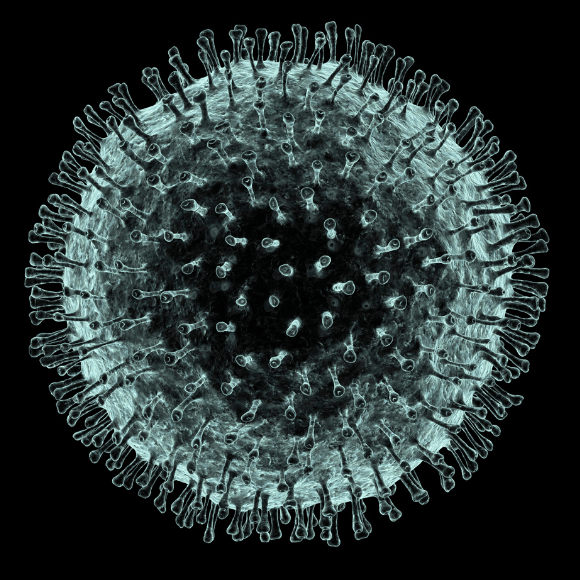 Coronavirus: sorting the fact from the fiction
Coronavirus: sorting the fact from the fiction
Myths about the novel coronavirus, COVID-19, are spreading through the population faster than the disease itself, so what do you really need to know about the ongoing pandemic?
Drug repurposing – anti-malarials
Chloroquine is an antimalarial drug used in the treatment of Plasmodium vivax malaria. Three methods to quantify chloroquine and its metabolite in blood matrices were developed and validated in this research piece.
This research presents a synthesized scaffold that can act as a therapeutic template for further synthetic modifications toward the search for a new antimalarial agent.
This work presents the first pharmacogenetic report of an association between chloroquine/primaquine responses with OATP transporters.
Exploration of thiaheterocyclic hHDAC6 inhibitors as potential antiplasmodial agents
Here, four hHDAC6 inhibitors showed submicromolar potency against both a chloroquine-sensitive and a chloroquine-resistant strain of Plasmodium falciparum with high selectivity indices, pointing to the relevance of exploring hHDAC6 inhibitors as potential new antiplasmodial agents.
The effect of SNPs in CYP450 in chloroquine/primaquine Plasmodium vivax malaria treatment
This study investigates CYP1A2, CYP2C8, CYP2C9, CYP3A4 and CYP3A5 genetic polymorphisms influence on chloroquine/primaquine treatment.
This article presents a validated method that has been successfully used in a PK study in miniature pigs, and paves the way for future development.
Drug-resistant Plasmodium falciparum: are recent advances a cause for optimism?
This Editorial evaluates the problem of artemisinin resistance and the risk to success of the malaria control and elimination program.
Dual-functioning antimalarials that inhibit the chloroquine-resistance transporter
This article reviews the discovery of dual-function antimalarials that are proposed to target both hemozoin formation and the chloroquine resistance transporter, PfCRT and discusses them in relation to the mechanism of action of 4-aminoquinolines, chloroquine resistance and resistance reversal.
The aim of this developed assay is to help determine drug use in these areas and also to be a complement to interviewing patients, which will increase reliability of surveys.
Molecular and physiologic basis of quinoline drug resistance in Plasmodium falciparum malaria
This review briefly summarizes the progress in understanding of the biochemistry of chloroquine resistance, and discusses where additional work is needed.
Type I interferon in HIV treatment: from antiviral drug to therapeutic target
This review describes the transition from the proposed use of type I IFN as antiviral drugs in HIV infection, to the idea that blocking their activity or production may provide an immunologic benefit of much greater importance than their antiviral activity.
Congenital malaria: rare but potentially fatal
This review discusses the recommended treatment options for congenital malaria.
CYP2C8 and antimalaria drug efficacy
This article reviews and predicts the possible relevance, or lack of, of CYP2C8 polymorphisms in the present and future efficacy of amodiaquine. Chloroquine and dapsone, both substrates of CYP2C8, are also discussed in the same context.
Prospects for the treatment of drug-resistant malaria parasites
This article reviews the molecular basis of the action of, and resistance to, different antimalarials and examines the prospects for the next generation of drugs to combat this potentially lethal human pathogen.
For updates on the coronavirus outbreak, as well as the latest recommendations and tips for reducing the spread of the disease, check the WHO coronavirus page.
For definitions and basic info on COVID-19, read Coronavirus Disease 2019 (COVID-19) – Signs, Symptoms and Diagnosis.

